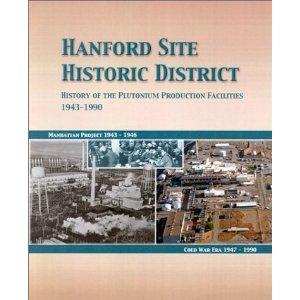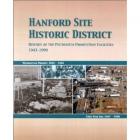Marceau, T. E., D.W. Harvey, D.C. Stapp, S.D. Cannon, C.A. Conway, D.H. DeFord, and B.J. Freer, et al., eds. Hanford Site Historic District: History of the Plutonium Production Facilities, 1943–1990. Columbus, OH: Battelle Press, 2003.
The Hanford Site Historic District encompasses 560 square miles in southeastern Washington state. Hanford Site Historic District is the result of a four-year project conducted by the Richland Operations Office of the US Department of Energy (DOE), in collaboration with the Washington State Historic Preservation Office and the Advisory Council on Historic Preservation. It documents the history of the Hanford Site and includes substantial information on the Manhattan Project—Hanford produced the plutonium which, along with the enriched uranium from Oak Ridge, ended up at Los Alamos, where scientists feverishly worked out the development of the atomic bomb—and the Cold War. It embodies the history of almost fifty years of plutonium production, containment, shipment, and the eventual shutdown of the plutonium production facilities in 1990. Many environmental historians are interested in the long-term effects of radiation on workers and the environment, and these scholars will be pleased by the sections on worker health and safety which chronicle the evolution of safety awareness within the plant, amply illustrated by historic photographs, and a chronology of changing radiation standards for workers. The authors also provide excellent overviews of waste management onsite and limited information on radiation in the air and water offsite. With its four substantial chapters covering the historic overview, the changing plutonium production facilities, a guide to further resources, and recommendations for future uses, this work will be the handbook on Hanford and an important resource on the atomic age for years to come.
(Text adapted from an H-Net review by Susan Quinnell.)



